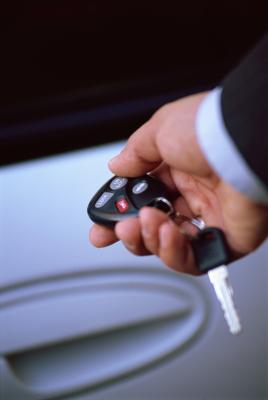
Few things rival the annoyance of being shaken out of a sound sleep by a car alarm, only to look outside and see the neighborhood stray cat -- and the owner of the car -- looking guilty. Alarms can be triggered by everything from loud noises to forgetting to disarm it before you open the door. Knowing how car alarms work can help you restore a little domestic tranquility to your block.
In its simplest form, a car alarm is nothing more than a simple computer, a sensor, a siren and a remote control for arming and disarming the alarm. When the sensor detects an intrusion or other input above a given tolerance, the alarm computer sets off the siren, which makes loud noises to deter the thief from continuing his work. More advanced alarms include immobilizers that prevent the car from starting, paging systems to alert the vehicle owner the alarm has been activated, and even the ability to arm and disarm the alarm over the Internet.
The most basic alarms use a single voltage sensor to determine when a theft or break-in attempt is being made. This sensor monitors the static voltage of the car's electrical system and triggers the alarm when it senses a drop in voltage, such as when a door or trunk is opened and the interior lights go on. Attempting to start the car or cut the power will also trip the voltage sensor.
The most common form of sensor found in car alarm systems are shock or vibration sensors that detect when someone or something is attempting to move or gain access to the vehicle. The movement then triggers the alarm. Shock sensors come in single- and dual-stage form. Single-stage sensors only detect the heavy impact of a door being forced or glass breaking, but a dual-stage will chirp the siren as a warning at a light impact before setting the alarm off in full at a heavier impact.
These sensors are often subject to false alarms from animals jumping on the vehicle, the vibration of a heavy truck passing by, or loud noises such as stereos or loud exhaust. As a result, these sensors can typically be adjusted for sensitivity to reduce false alarms.
Simple switches can be placed on hoods, doors and trunks to activate the alarm when any of these are opened while the alarm is armed. When the door is opened, the switch closes and the alarm triggers the siren.